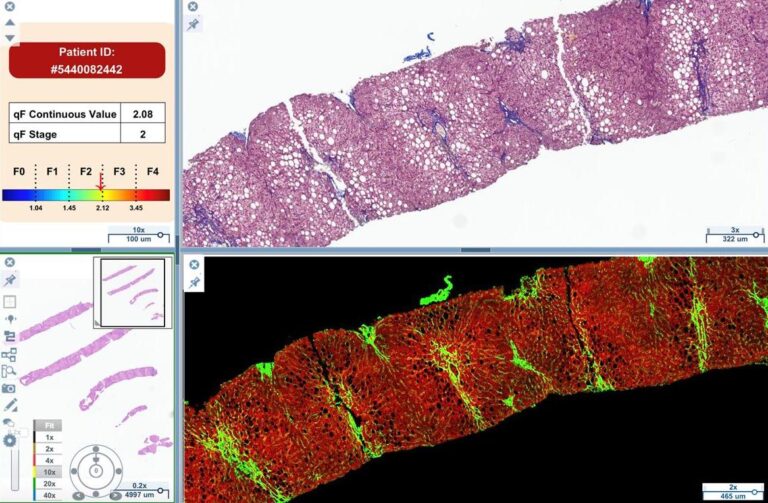Digital Pathology: The Future of Diagnosis
Driven by AI
Digital pathology refers to the digitalization of glass slides for computational analysis. It involves scanning tissue sections at high resolution to create whole slide images (WSI) that can be stored, managed, viewed, analyzed and shared digitally. Artificial intelligence provides cutting-edge analytics to maximize the findings from digital pathology images.

Transforming Assessments with Digital Pathology
Beyond the Microscope
Digital pathology allows for digitisation of tissues slides for visualisation, and allows for quantification of features when coupled with image analysis software and computational algorithms in an automated and objective manner. Importantly, this removes the subjectivity of manual staging/scoring and instead generates quantitative metrics.
How AI Uncovers Hidden Disease Clues
Quantifying the Invisible with AI
Artificial intelligence (AI) provides cutting-edge analytics to maximize the potential of digital pathology images. AI-based tools utilize advanced machine and deep learning algorithms trained on thousands of whole slide images annotated by pathologists. Moreover, these AI algorithms can identify and fully quantify the morphology, architecture and spatial distribution of histopathological structures, cell types and features that may be difficult for the human eye to discern or consistently characterize.

Benefits of AI in Digital Pathology
- Characterization and quantification of the morphology, architecture and spatial distribution of histopathological structures, cell types and features
- Provides continuous values instead of ordinal stages/grades
- Captures subtle patterns and changes indicative of treatment response or disease progression machine-learning algorithms
- Eliminates intra-observer and interobserver variability in assessments
- Facilitates efficiency gains in high volume clinical trials and routine assessment
AI Digital Pathology in Liver Disease Drug Development
Accelerating Advancements
Integrating cutting-edge AI analytics unlock enhanced quantification and insights from that are easily missed while looking through the microscope alone. AI digital pathology solutions promise to transform liver disease evaluation through unprecedented analytical depth and consistency.
